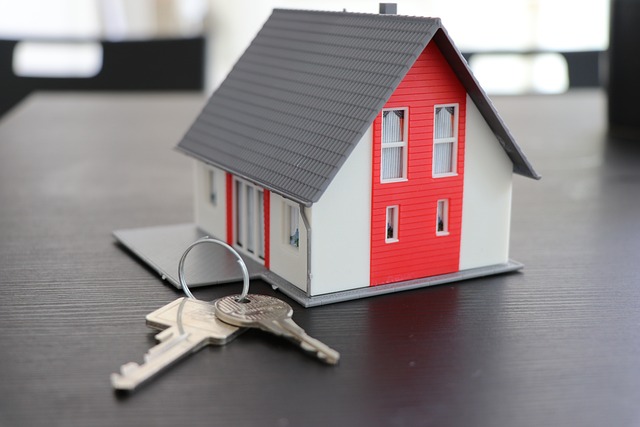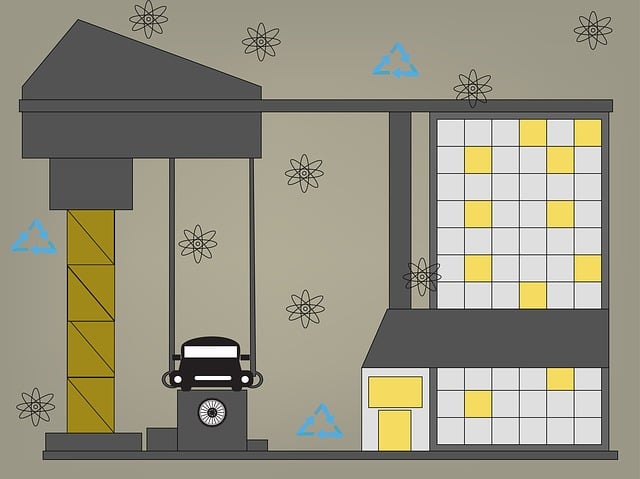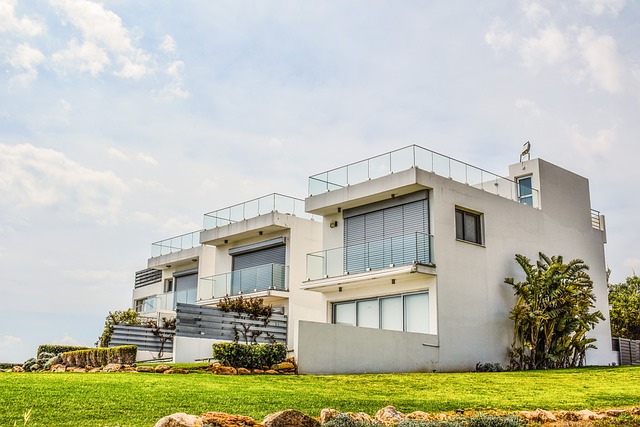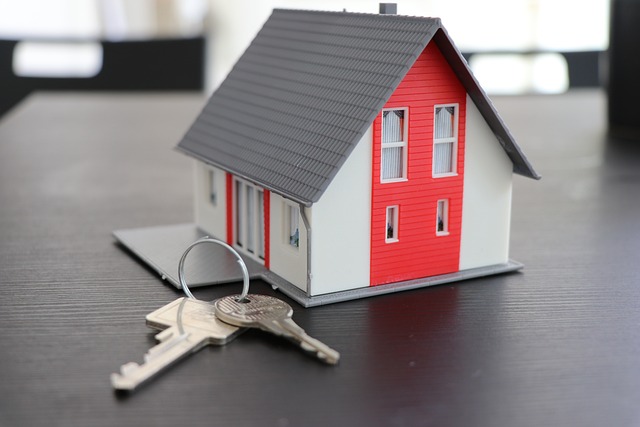Local Commercial Property Insurance is a specialized safety net for businesses, covering unique regional risks like natural disasters and civil disturbances. It offers comprehensive protection against fires, theft, vandalism, business interruption, and more. For commercial buildings, this includes structural coverage, liability protection, and options for additional risks like floods or cyber attacks. Understanding deductibles, limits, and exclusions is vital. The claims process involves reporting the incident, assessing damages, filing a formal claim, and insurance company review. The market adapts to economic shifts and tech advancements, with a focus on cyber risks and tailored solutions.
In today’s competitive business landscape, safeguarding your commercial property is paramount. Understanding Property and Casualty Insurance for Commercial Buildings is essential for every entrepreneur. This comprehensive guide delves into the intricacies of local commercial property insurance, offering a detailed overview that caters to diverse business needs. From recognizing unique coverage requirements for various structures to navigating risk assessment and claims processes, we equip you with knowledge to make informed decisions. Embrace peace of mind knowing your investment is protected.
Understanding Local Commercial Property Insurance: A Comprehensive Overview

Local Commercial Property Insurance is a crucial safety net for business owners, safeguarding their investments in commercial buildings and their contents against potential risks and disasters. This type of insurance is designed to cover the unique challenges faced by businesses operating within a specific local area. Unlike general property and casualty insurance that offers broad protection, local commercial property insurance tailors its coverage to address region-specific perils like natural disasters prevalent in certain locations, or industry-specific risks encountered by businesses in specific sectors.
The comprehensive overview of this insurance includes understanding the wide range of perils it protects against, such as fire, theft, vandalism, and civil disturbances. It also covers business interruption, providing financial support during periods when a covered event disrupts normal operations. This is especially vital for local businesses where a single incident could significantly impact their revenue stream. By understanding these features and benefits, business owners can make informed decisions to safeguard their property and assets effectively through the right insurance coverage.
Types of Commercial Buildings and Their Unique Insurance Needs

Commercial buildings come in various types, each with its own unique structure and operational requirements. From office towers to retail spaces and industrial warehouses, every type of property has distinct insurance needs. For instance, properties with extensive glass facades might require specialized coverage for potential breakage or shattering, which could lead to significant liability issues. Similarly, retail establishments must consider inventory loss and damage as a critical risk factor due to the high value of stock and the constant exposure to theft or damage.
In terms of Property and Casualty Insurance for Commercial Buildings, these policies are designed to offer comprehensive protection tailored to each structure’s specific needs. Casualty insurance covers unforeseen events like accidents, fires, or vandalism, providing financial compensation for damages. Meanwhile, property insurance safeguards against physical losses, ensuring business owners can rebuild or replace their premises and contents after a covered event. A well-structured policy combines these elements to safeguard investment and minimize downtime for commercial enterprises.
The Importance of Property and Casualty Coverage for Businesses

For local businesses, ensuring comprehensive protection is paramount to their long-term success and stability. This is where property and casualty insurance for commercial buildings steps in as a cornerstone of risk management strategies. Such coverage safeguards against potential financial disasters resulting from unforeseen events like fires, thefts, or natural calamities, which could otherwise cripple a business’s operations and even lead to permanent closure.
Commercial property insurance provides peace of mind by covering the physical assets of a business, including buildings, inventory, and equipment. Casualty insurance, on the other hand, offers protection against liabilities arising from accidents or injuries on the premises, safeguarding businesses from costly legal battles and settlements. Together, these two components create a robust safety net, enabling local enterprises to focus on growth and prosperity without the constant shadow of financial insecurity.
Key Components of a Commercial Property Insurance Policy

When considering property and casualty insurance for commercial buildings, a comprehensive policy should include several key components to ensure adequate protection. Firstly, coverage for the physical structure of the building itself is essential, including any on-site structures like sheds or storage units. This part of the policy will compensate for damage or loss due to perils such as fire, storms, or vandalism.
Additionally, a robust commercial property insurance policy should extend to business interruption and extra expense coverage. This ensures that if your operations are disrupted by insured events, you receive compensation for losses like revenue reduction, increased operating costs, or expenses related to relocation during repairs. Such provisions safeguard your business’s financial stability in unforeseen circumstances.
Assessing Risk: What Factors Influence Your Premium?

When assessing risk for local commercial property insurance, several factors influence your premium. One key consideration is the type and age of the building—older structures may require more extensive coverage due to potential structural issues or outdated safety features. Additionally, location plays a significant role; properties in areas prone to natural disasters like floods, earthquakes, or hurricanes typically face higher premiums.
The use of the property is another critical factor. Commercial buildings that house hazardous materials, such as chemicals or flammable substances, require specialized Property and Casualty Insurance for Commercial Buildings to mitigate potential risks. Similarly, high-occupancy facilities must adhere to stringent safety regulations, which can impact their insurance costs. Other influences include the building’s security measures, fire suppression systems, and overall maintenance condition.
Navigating Deductibles, Limits, and Liability in Commercial Insurance

Navigating Deductibles, Limits, and Liability in Commercial Insurance is a crucial aspect of protecting your business and its physical assets. In Property and Casualty Insurance for Commercial Buildings, these elements play a significant role in determining the financial responsibility should a covered loss occur. Deductibles represent the amount you, as the policyholder, agree to pay out-of-pocket before insurance coverage kicks in. Adjusting deductibles can significantly impact your premium costs; higher deductibles often lead to lower premiums but require businesses to cover more initial expenses.
Liability limits specify the maximum amount of compensation your insurance will provide for claims against your business due to property damage or personal injury. Understanding these caps is essential, as they protect you from potentially devastating financial losses. Commercial insurance policies may also include various liability coverage options tailored to specific business needs, such as general liability, professional liability, and product liability. Additionally, policyholders should familiarize themselves with exclusions—events or circumstances not covered by the policy—to ensure their commercial property insurance provides adequate protection for their assets.
Exploring Additional Coverages to Strengthen Your Protection

When considering local commercial property insurance, it’s not just about covering your building; it’s about comprehensive protection for your business assets. Exploring additional coverages can significantly strengthen your policy, offering peace of mind in the face of unforeseen events. Property and casualty insurance for commercial buildings often includes standard coverage for physical damage to structures, but you may want to consider optional add-ons tailored to your specific needs.
For instance, flood or earthquake coverage might be necessary depending on your location, while business interruption insurance can provide financial support during periods when your property is uninhabitable. Extra coverages for valuable possessions like inventory, equipment, and technology are also essential, especially for businesses with significant assets. These additional layers of protection ensure that your commercial venture is shielded from a broader range of potential risks.
Claims Process: What to Expect When Filing a Claim for Damage to Your Property

When a claim is filed for damage to your commercial property, it’s crucial to understand what lies ahead in the claims process. The initial step involves contacting your insurance provider to report the incident, providing them with detailed information about the damages and any relevant details that could impact the claim. After this, they will assign an adjuster who will visit the site to assess the damage firsthand, taking photos and noting the extent of the loss.
The next phase includes filing a formal claim, where you’ll need to provide comprehensive documentation including photos, reports, and estimates for repairs. Property and Casualty Insurance for Commercial Buildings typically covers such expenses, but understanding your policy’s specifics is essential. Your insurance company will then review and assess the claim, evaluating it against your policy terms. Once approved, they will issue a payment or settlement, guiding you through the rest of the process to restore your commercial building.
Staying Informed: Recent Trends and Updates in Local Commercial Insurance

The landscape of local commercial property insurance is ever-evolving, shaped by changing economic climates, technological advancements, and legislative shifts. Staying abreast of these trends is crucial for business owners to ensure adequate coverage for their commercial buildings and operations. Recent updates in Property and Casualty Insurance for Commercial Buildings highlight a growing emphasis on cyber risks and data breaches. As businesses increasingly rely on digital infrastructure, insurers are introducing specialized policies to protect against potential losses from hacking, ransomware, and data theft.
Additionally, there’s a noticeable trend towards more tailored insurance solutions. Insurers are recognizing that every commercial property is unique, with distinct assets and vulnerabilities. This shift has led to the development of customized policies that address specific risks like those associated with construction sites, retail spaces, or industrial facilities. Business owners are encouraged to engage with their insurance providers to conduct regular risk assessments and update coverage as necessary, ensuring they remain protected against emerging threats in today’s dynamic business environment.
